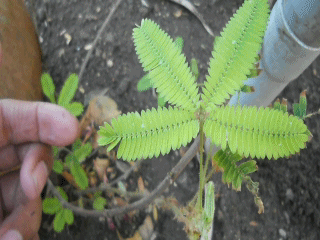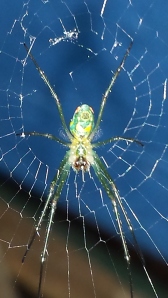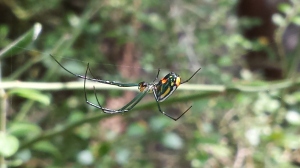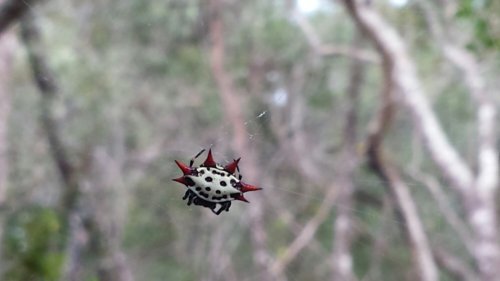I have a confession. When I was young I wasn’t very kind to spiders. My behavior can likely be attributed to fear; growing up we are surrounded by imagery of spiders being dangerous and alien. We fear what we don’t understand. The internet says Marie Curie once said “Nothing in life is to be feared, it is only to be understood. Now is the time to understand more, so that we may fear less.” And it’s true, the more I learned about spiders the less I squashed them. Now that I’m older, and a biologist, and living in Florida (read: constantly surrounded by giant spiders), I see spiders as fascinating, useful, and largely innocuous. And I’m on a mission to spread this view in order to gain back all the biology-karma I lost squashing spiders in my childhood. So, here are some neat facts I just learned after to a recent encounter.
Storytime. The other night I was outside enjoying the (relatively) cooler Floridian night and getting some work done. Suddenly I glimpsed a familiar shape darting towards the leg of my chair. A few inches long, but too meaty and agile to be an orbweaver or banana spider, I knew it had to be a wolf spider. So, I jumped up and reached for my phone and rushed to snap a picture before she retreated. When the flash went off I was greeted with a surprise…
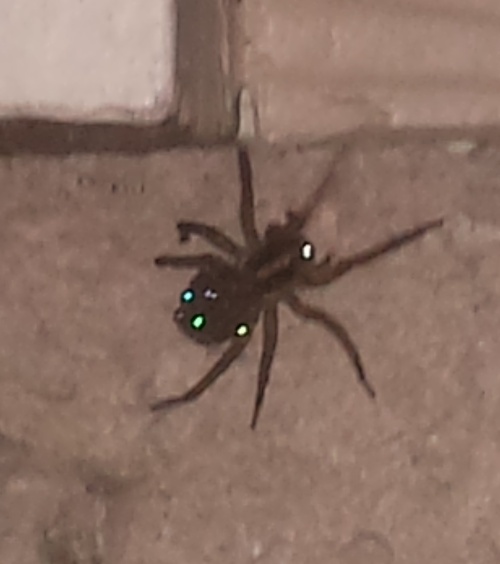
Proud Wolf Spider Momma
Reflections. Reflections from eyes. But wait, why are there reflections coming from the spider’s abdomen?
Woah. Cool! Ok, so now I know that wolf spider’s eyes are reflective, just like I’ve seen (and posted about) before in Golden Orb-weavers…
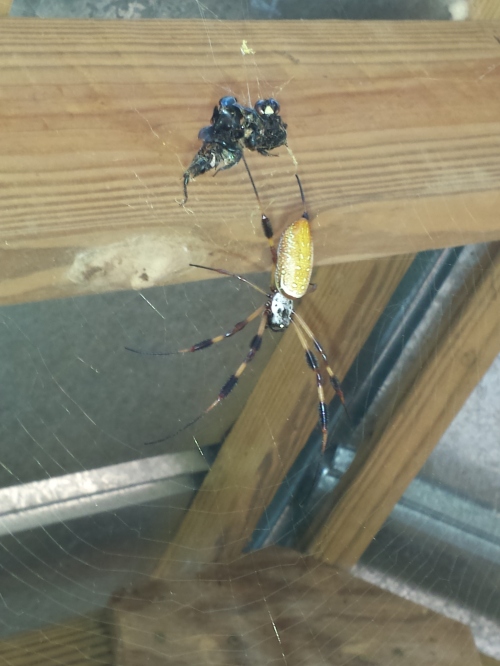
Golden Orb-weaver, La Chua Trail, Gainesville FL.
This is very similar to the reflections we’ve all seen before when shining a light towards certain mammals at night, such as cats or raccoons.

Raccoon hiding out behind UF’s Science Library, Gainesville FL.
So, what’s going on here? By reflecting light back through the retina there is more light available to the photoreceptors- enhancing night-vision. In vertebrates this is accomplished by the tapetum lucidum, or “bright tapestery” in Latin, a thin tissue membrane in the back of the eye. It looks like the tapetum has evolved independently in invertebrates and vertebrates, and actually exists in several invertebrate taxa including scallops, crustaceans, scorpions, and dragonflies. The tapetum in invertebrates consists of parallel strips of reflective guanine crystals- the same type of crystals that give fish their shiny metallic skin and allow chameleons to shift their skin color.
Want to see it for yourself? Go outside at night and shine a bright light into the grass. Those hundreds of reflective dots shining back? Wolf spiders looking at you. But fear not, for now you understand more. Just wear shoes.
(and share your cool spider pictures with me!)
